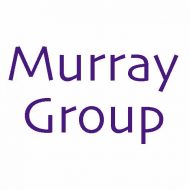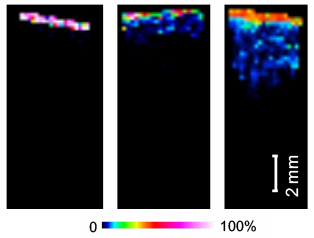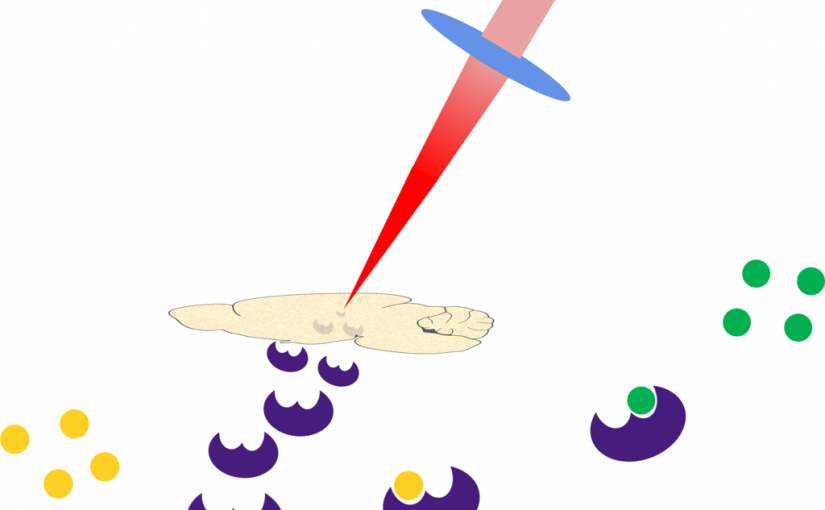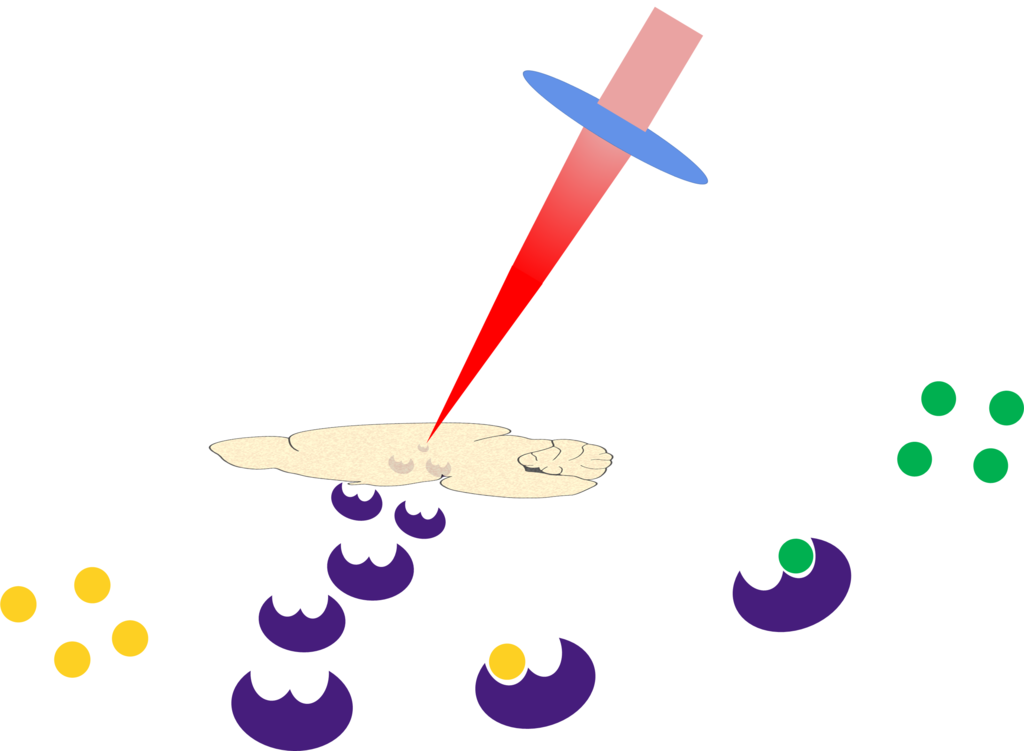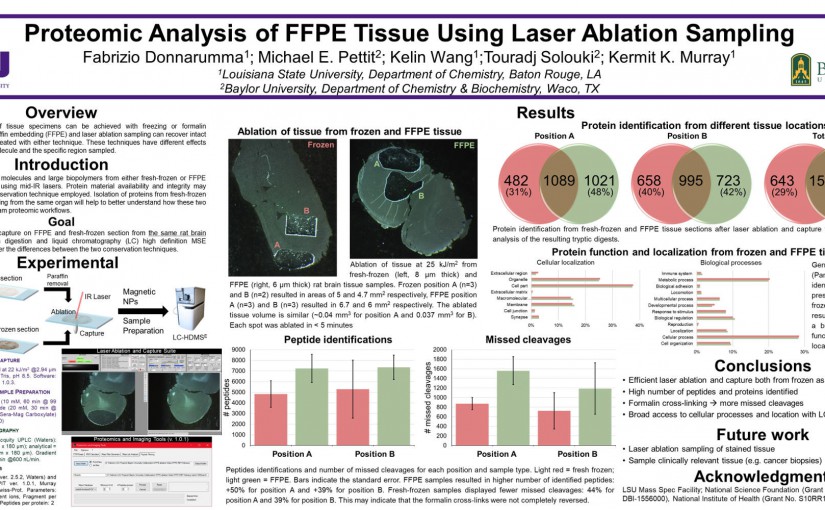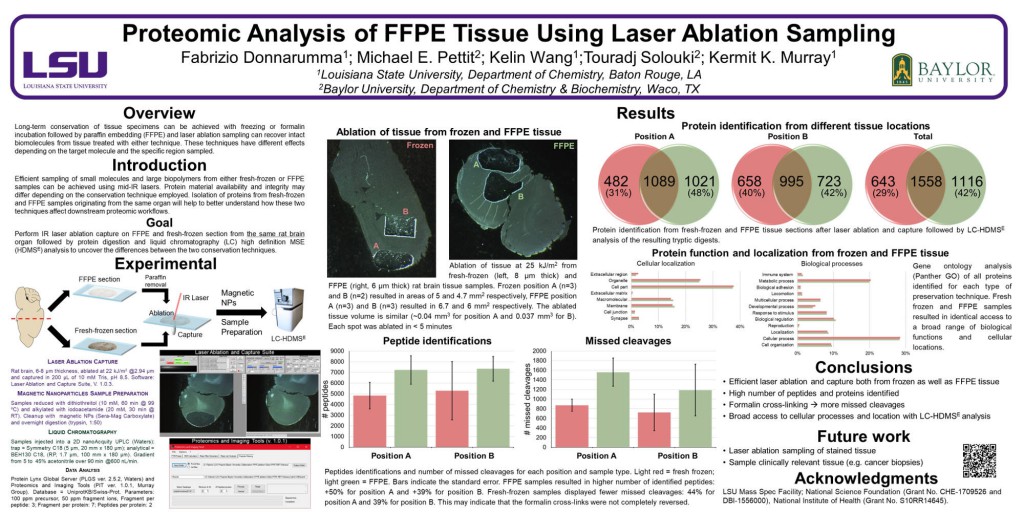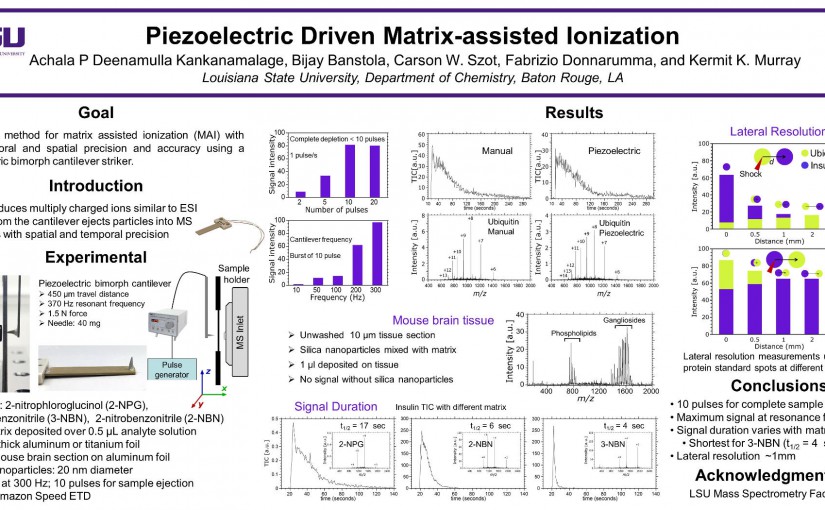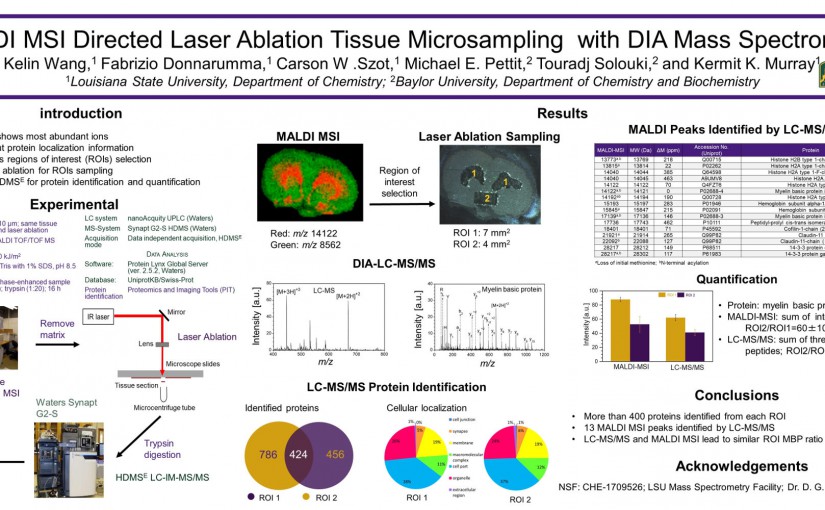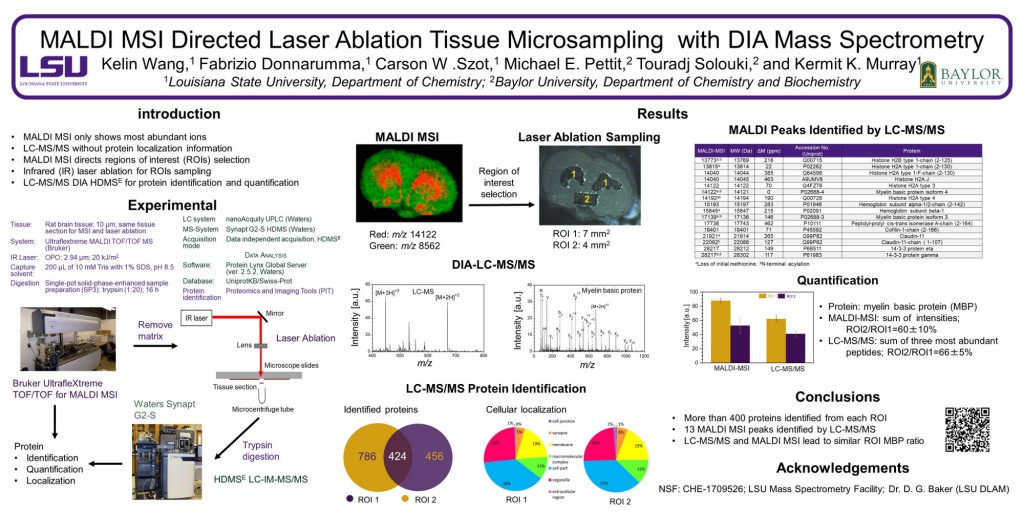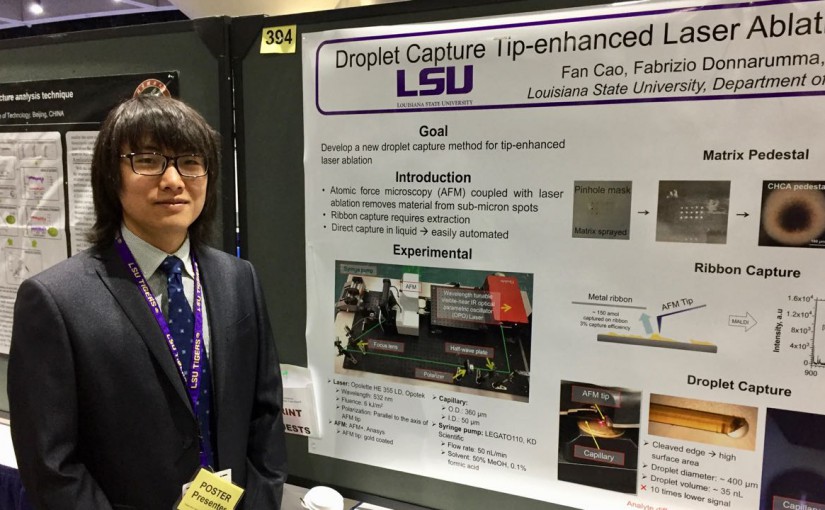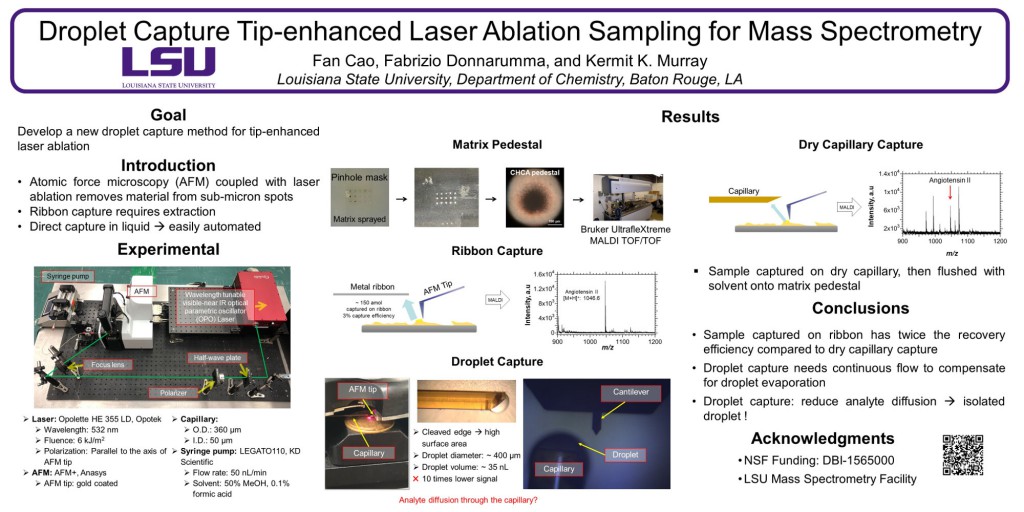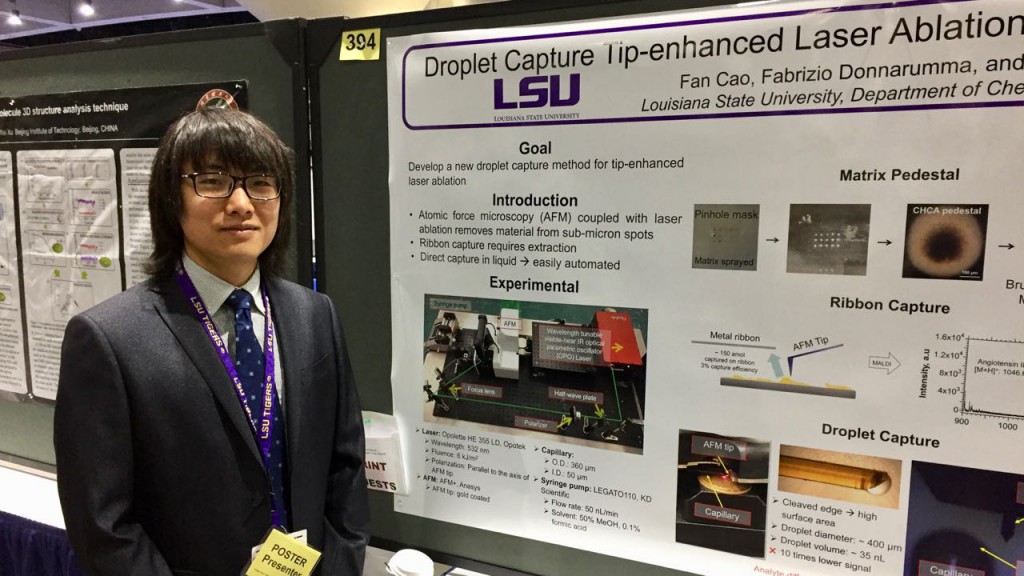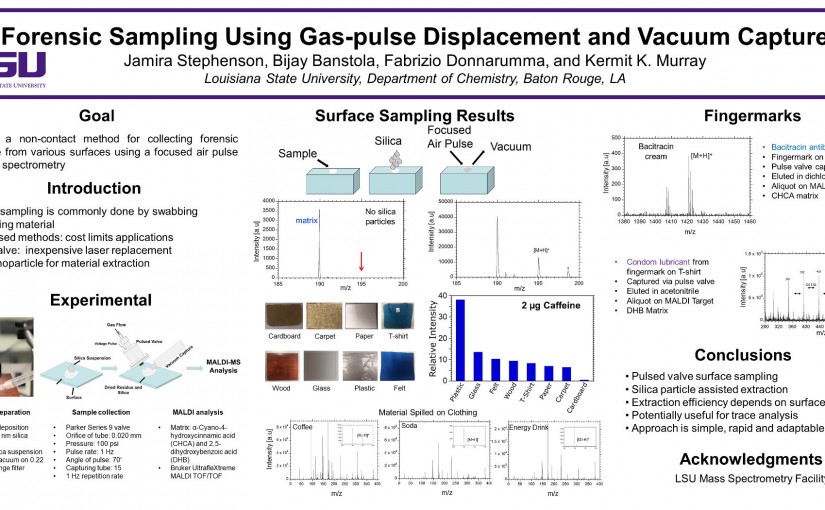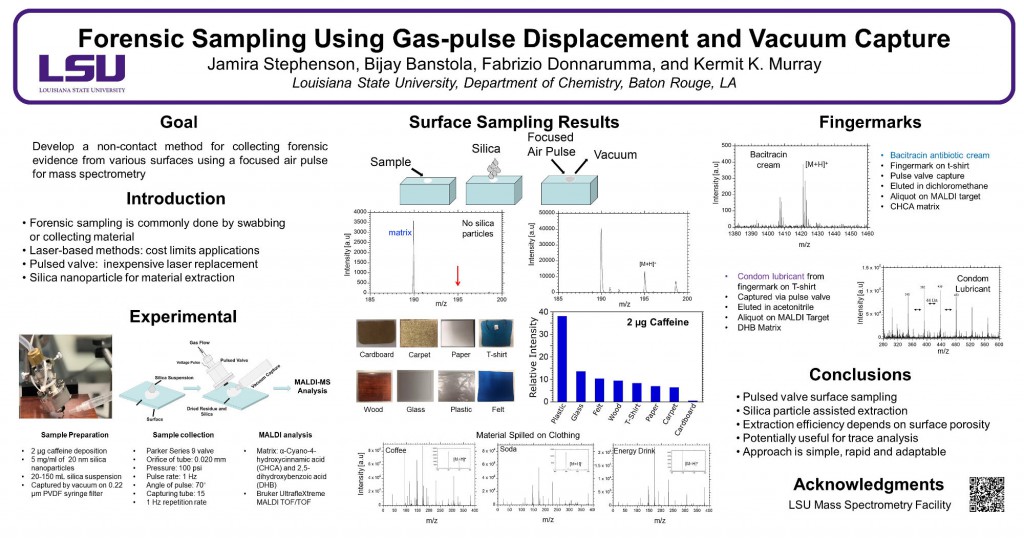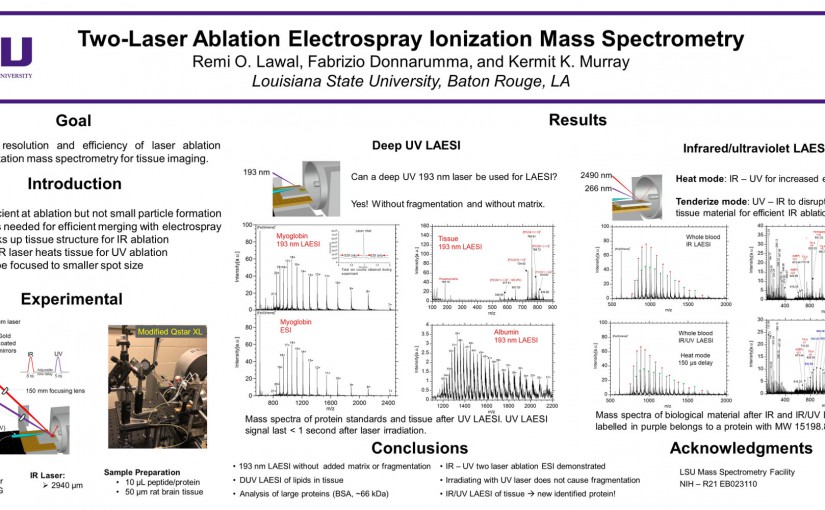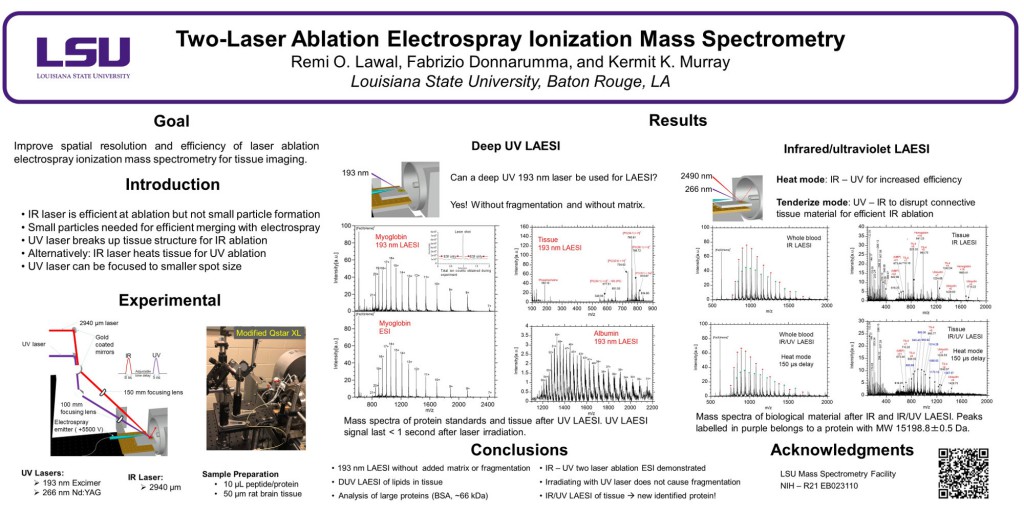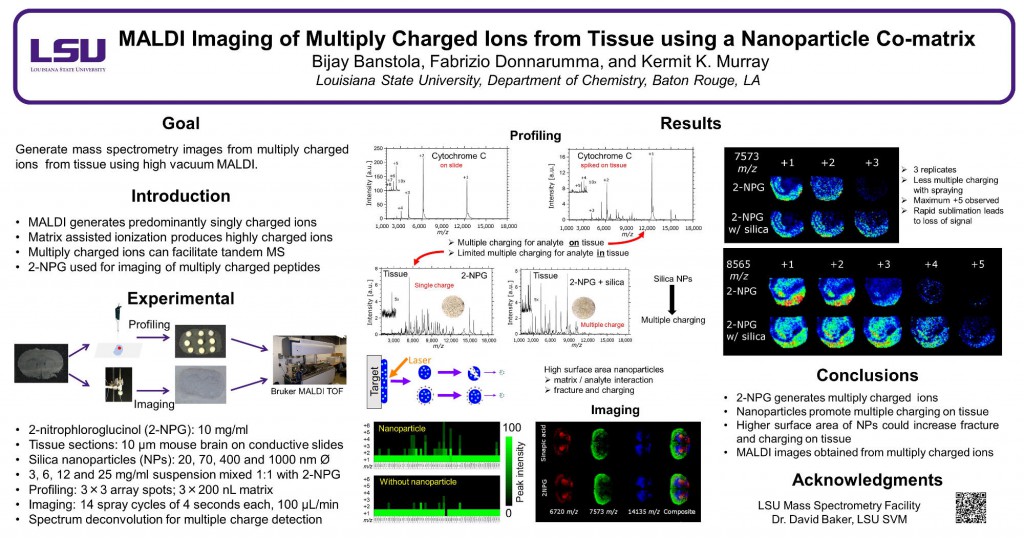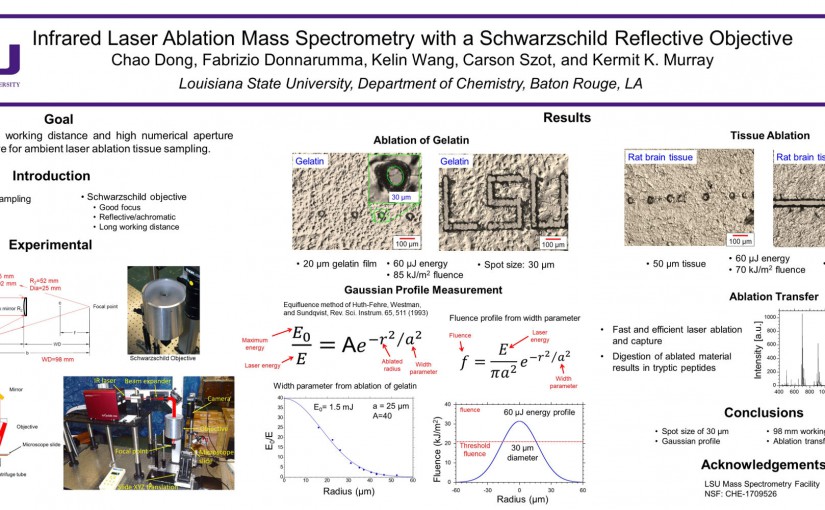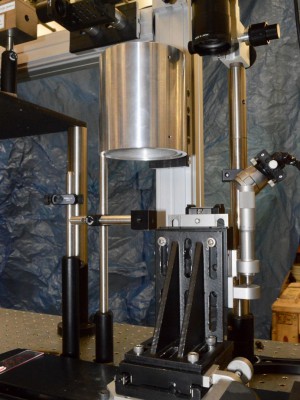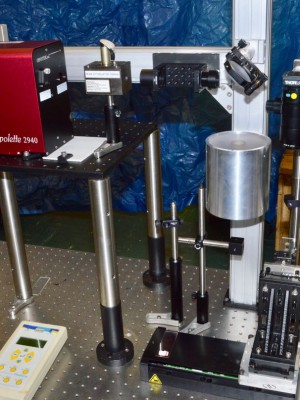ThOC 8:50
Igor Pereira, Bijay Banstola, Kelin Wang, Boniek Gontijo Vaz, Fabrizio Donnarumma, and Kermit K. Murray
Louisiana State University & Federal University of Goiás
Imazalil is a postharvest fungicide widely used for mold control in apples and has been classified as a potential cancerogenic in the NIH Hazardous Substances Data Bank. Imazalil is applied to apples by dipping, drenching, or spraying using concentrations between 1000 and 2000 ppm. The fungicide can penetrate the exocarp (outer skin) and diffuse into the interior mesocarp region of the fruit. MS analysis of imazalil treated apples is commonly conducted using the entirety of the fruit, which results in loss of localization information and does not provide any information about the rate of penetration. MALDI imaging can provide localization of imazalil and laser ablation can extract the compound with minimal sample prep for subsequent ESI MS.
